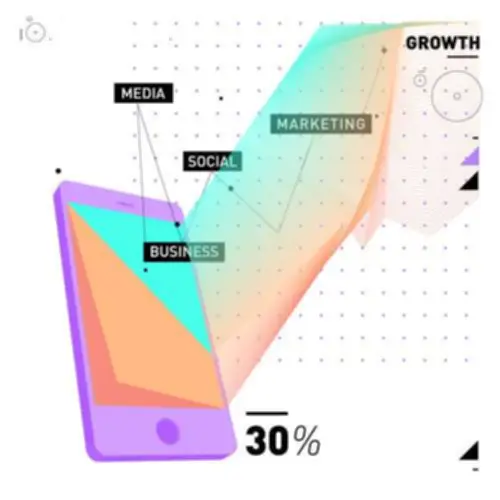Building on the foundation laid by Emerging Trends in Interactive Visual Design for 2024, this article explores how emotional engagement elevates user experiences by making digital interactions more intuitive, memorable, and impactful. As visual design continues to evolve, integrating emotional intelligence becomes essential for creating interfaces that truly resonate with users, fostering deeper connections and driving engagement in an increasingly competitive digital landscape.
- Introduction: The Evolving Role of Emotion in Visual Design in 2024
- The Psychology of User Emotion and Its Impact on Visual Engagement
- Designing for Emotional Resonance: Techniques and Innovations
- Advanced Technologies Enabling Emotional Engagement
- Case Studies: Successful Emotional Design in 2024
- Ethical Considerations and User Privacy in Emotional Design
- Future Directions: Integrating Emotional Data into Interactive Design Trends
- Connecting Emotional Engagement to Broader Interactive Trends
Introduction: The Evolving Role of Emotion in Visual Design in 2024
As digital interfaces become more sophisticated, the role of emotion in visual design is shifting from a peripheral consideration to a central strategy for enhancing user experience. Emotional engagement not only captures attention but also fosters loyalty, trust, and memorable interactions. In 2024, designers are increasingly leveraging emotional intelligence— the ability to recognize, interpret, and respond to user emotions— to craft experiences that feel personalized and human-centric.
This evolution aligns with broader trends in interactive visual design, such as the integration of AI, immersive environments, and contextual responsiveness. The parent article, Emerging Trends in Interactive Visual Design for 2024, highlights how technological advances are reshaping interfaces. Building on this, harnessing user emotion adds a vital layer— transforming passive viewing into active, emotionally resonant experiences that deepen user connection and engagement.
The Psychology of User Emotion and Its Impact on Visual Engagement
Understanding the psychological underpinnings of user emotion is crucial for designing visuals that evoke specific responses. Emotional triggers such as color, imagery, and storytelling activate neural pathways associated with pleasure, trust, or urgency. For example, warm colors like red and orange tend to stimulate excitement and action, while cool hues like blue promote calmness and trust.
Behavioral science research indicates that emotional states significantly influence interaction patterns. When users feel connected or understood, they are more likely to explore further, share content, or complete conversions. Conversely, negative emotions like confusion or frustration can lead to disengagement. Therefore, designing with emotional responses in mind can optimize user pathways and decision-making processes.
A notable example is how e-commerce platforms utilize emotional triggers—such as personalized recommendations or empathetic messaging—to increase purchase likelihood. Insights from behavioral science, including the concept of emotional contagion, inform designers on how visual cues can foster positive feelings and loyalty.
Designing for Emotional Resonance: Techniques and Innovations
Creating emotionally resonant visuals involves strategic use of design elements:
- Color psychology: Utilizing colors that evoke desired feelings—such as green for harmony or purple for luxury—can influence user mood and perception.
- Dynamic visual cues: Animation, micro-interactions, and responsive layouts respond to user actions, reinforcing emotional states and guiding behavior.
- Storytelling elements: Embedding narratives through visuals and copy fosters a sense of empathy and emotional investment, making experiences more memorable.
- Adaptive visuals: Interfaces that adjust based on real-time assessments of user mood—detected via implicit signals—can personalize engagement, such as shifting color schemes or content tone.
For instance, a mental health app might use calming visuals and encouraging messages when detecting signs of user stress, thereby providing comfort and support. These techniques, rooted in psychological principles, help create more meaningful and emotionally engaging digital experiences.
Advanced Technologies Enabling Emotional Engagement
Emerging technologies are revolutionizing how interfaces detect and respond to user emotions:
| Technology | Application | Impact |
|---|---|---|
| AI-driven emotion detection | Analyzing facial expressions, voice tone, and text sentiment | Personalizes content and visuals in real-time, enhancing relevance and engagement |
| Biofeedback (facial recognition, eye tracking) | Monitoring physiological signals to assess emotional states | Enables dynamic adaptation of visual cues and interface responses |
| Immersive AR/VR environments | Creating deeply engaging, multisensory experiences | Facilitates emotional immersion, empathy, and storytelling at new levels |
These technologies allow designers to craft interfaces that are sensitive to user emotions, fostering more authentic and compelling experiences. For example, virtual reality environments can simulate scenarios that evoke empathy or joy, promoting emotional learning and connection.
Case Studies: Successful Emotional Design in 2024
Real-world applications demonstrate the power of emotional design:
- Spotify: Personalized playlists and visualizations adapt to user mood, detected through listening habits and feedback, creating a tailored emotional experience.
- Headspace: Use of calming visuals, soothing soundscapes, and empathetic messaging helps users reduce stress, boosting engagement and retention.
- Educational Platforms: Interactive storytelling and gamified elements evoke curiosity and motivation, especially when paired with adaptive visuals responding to learner emotions.
Metrics such as increased time on site, higher conversion rates, and positive user feedback confirm that emotionally resonant interfaces drive better engagement. Analytics tools now incorporate emotional response data, enabling continuous optimization.
Ethical Considerations and User Privacy in Emotional Design
While leveraging emotional data offers significant benefits, it raises crucial ethical questions. Balancing personalization with user consent is paramount. Users should be fully informed about how their emotional data is collected, stored, and used. Transparency builds trust and aligns with regulations like GDPR and CCPA.
There is also a risk of emotional manipulation—exploiting user vulnerabilities for commercial gain. To maintain trust, designers must prioritize user well-being, avoid deceptive practices, and implement safeguards against misuse of sensitive data.
Implementing ethical frameworks, such as value-sensitive design, ensures that emotionally engaging interfaces respect user autonomy and promote positive experiences without manipulation.
Future Directions: Integrating Emotional Data into Interactive Design Trends
Looking beyond 2024, emotional insights will increasingly influence design trends—driving personalization, adaptive storytelling, and immersive environments. Cross-disciplinary collaborations with psychologists, neuroscientists, and designers will foster more nuanced understanding of emotional responses, leading to richer, more empathetic interfaces.
For example, integrating emotional data with augmented reality could enable virtual assistants that respond empathetically to user moods, creating seamless, emotionally intelligent interactions. Preparing for this future involves investing in research, ethical frameworks, and technologies that prioritize user well-being.
Connecting Emotional Engagement to Broader Interactive Trends
Harnessing user emotion complements and amplifies other emerging trends such as personalization and gamification. When combined, these elements create cohesive, engaging experiences that feel tailored and rewarding. For instance, gamified interfaces that adapt challenges based on emotional state can improve motivation and retention.
Furthermore, emotional design enhances accessibility by recognizing diverse emotional responses and ensuring interfaces are inclusive and supportive. This synergy results in digital experiences that are not only engaging but also equitable and empathetic.
“Integrating emotional intelligence into visual design is transforming interfaces from mere tools into empathetic companions that understand and respond to human feelings, shaping the future of user experience.”
Ultimately, by deepening our understanding of user emotions and leveraging advanced technologies responsibly, designers can craft visual experiences that are not only engaging but also enriching—aligning with the ongoing evolution of interactive visual design discussed in the parent article.


